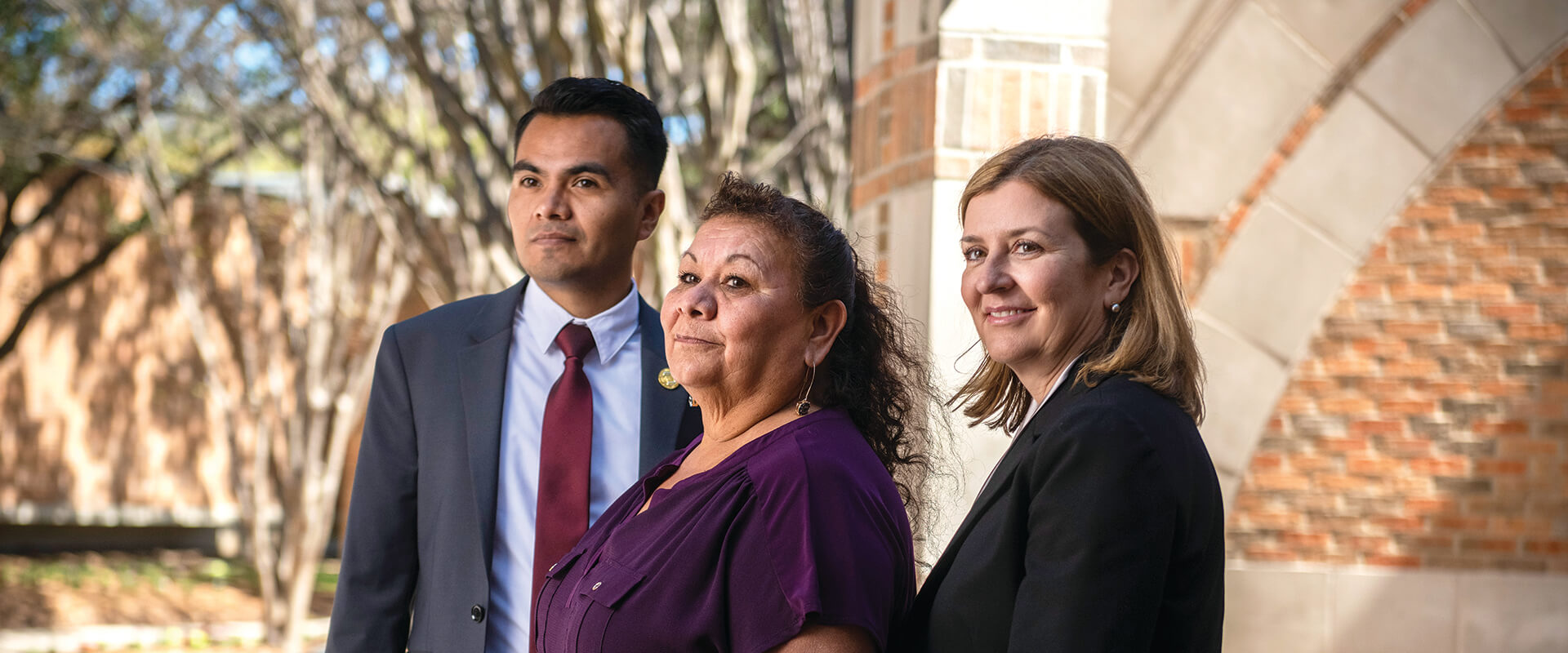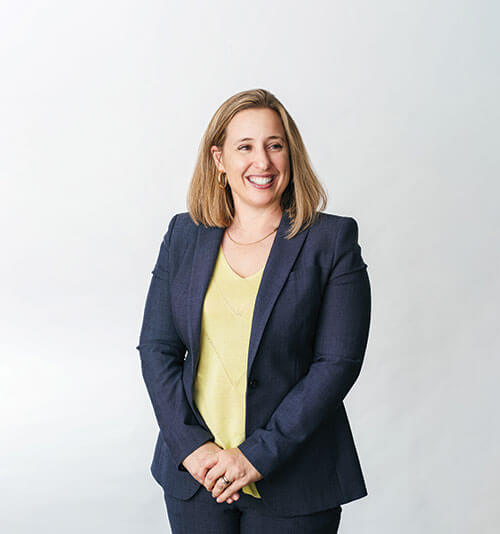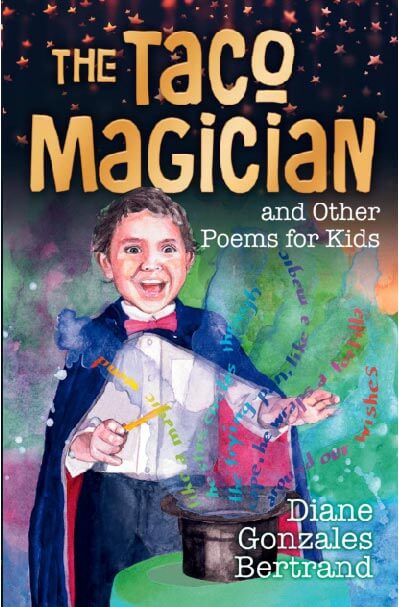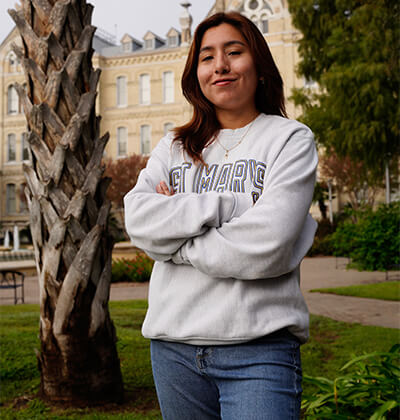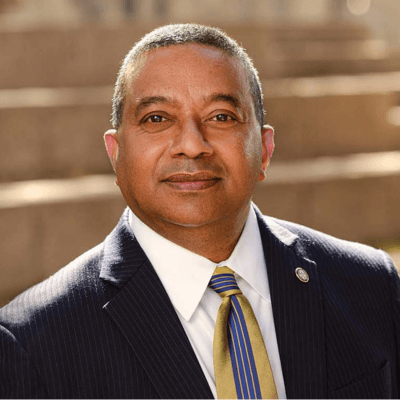Inspiring Hope
by Frank Garza

It took 15 years in prison to understand who she was, but Gricelda Moreno knows — she is strong, she has found her faith and she understands what domestic abuse is.
She was convicted in 1988 for failing to protect her daughter from being murdered by her abusive ex-husband and she received a 99-year sentence. For the next nine years, Moreno was repeatedly denied parole. That’s when Clinical Professor of Law Stephanie Stevens (J.D. ’91) and the St. Mary’s University School of Law’s Wrongful Convictions Project entered the picture.
“She tried many times to do the right thing, and it just felt like it was time for someone to step up for her and try,” Stevens said.
This involved many appearances before the parole board to convince them that Moreno deserved a second chance, Stevens said.
“They want to see rehabilitation,” Stevens said. “We were able to show that in all the time she had been in prison, she was a model inmate.”
The parole board did eventually see it that way — Moreno didn’t cause issues in prison, she earned several work training certificates and she attended therapy to work through her issues. She even had a job lined up for her if she was granted parole, Stevens said.
“I was very happy that somebody actually believed in me, that I had not killed my little girl,” Moreno said. “It gave me hope.”
Including Moreno’s case, St. Mary’s Law has worked on more than 50 post-conviction cases since the clinics began, Stevens said.
Ashley De La Garza (J.D. ’20) started working with the Wrongful Convictions Project in her second year of law school because of her interest in reintegrating those released from prison.
“I’ve seen the difficulties of coming from that background and not being able to move past it,” De La Garza said.
For the project, De La Garza would review letters from prospective clients, but she would also conduct background research. She looked for whether the individual already filed a writ of habeas corpus, which requires the court to determine if a person’s imprisonment or detention is lawful. If they had, “you can’t go back and file another,” De La Garza said.
“What was difficult was seeing that half of them had already filed pro se (without representation),” she said. “They didn’t realize how much they were damaging their case by doing that.”
Arguing a wrongful conviction is an uphill battle. Often, the case is old and it can be difficult to gather the facts, said Clinical Professor of Law Anne Burnham (J.D. ’96).
This is why the project carefully chooses cases. Where did the case occur? How easy would it be for law students to travel to the county to investigate? Do the merits of the case increase the likelihood of success? Is there something about the person’s story that stands out?
“When the students narrow down the cases and do a preliminary investigation, they bring it to us, and we determine if there may be something more we can do to help,” Stevens said. “After that, we begin a more thorough investigation.”
That involves meeting with witnesses and going through police reports. But if the case is old, people may be difficult to locate. Records may have been destroyed. Rarely, a case makes it past that second investigation. Then the project staff file a writ, which leads to more legwork and investigation.
“By that point, we may have invested a couple of years or more on the case,” Stevens said.
And with that time invested comes mountains of files. Briefs. Court opinions. Case law. Letters from the community. Petitions. Interview transcripts.
The staff has dedicated a “war room” in the Center for Legal and Social Justice to house files and plan tactics. Because of how long cases take, the clinic ensures each is well documented, said Francisco Martinez (J.D. ’20), former research assistant for the project.
“It allows everyone to go through and see where the case is now. There’s a lot of discovery, so it definitely helps,” Martinez said.
Due to the exhaustive post-conviction work, the Wrongful Convictions Project — currently consisting of 10 students — is only handling three cases, Burnham said.
One of those cases involves a man named Rogelio Gutierrez, who was convicted of participating in a gang rape in 1992. Gutierrez served more than two decades in prison before he was released on bond pending ongoing litigation of his case thanks to the project’s efforts.
“His mother and sister went to bat for him, and when I started looking at the case, I thought it was compelling,” Burnham said. “The victim had already recanted, and the system hadn’t done right by him in recognizing his innocence.”
After several hearings over the past few years, the Wrongful Convictions Project awaits the court’s findings to grant Gutierrez relief in the form of a new trial or acquittal.
Like Gutierrez, in Moreno’s case, though she’s out of prison, there’s still work to be done. The next step is seeking clemency for her, so that she might enjoy the full rights of citizenship again, such as the right to vote, Stevens said.
“I’m so grateful for the clinic because of the people in there, the people who work so hard to help people like me,” Moreno said. “I couldn’t pay them back, and yet they were willing to take a big chance on me, without knowing me. Something the rest of the world couldn’t give me, they did.”

